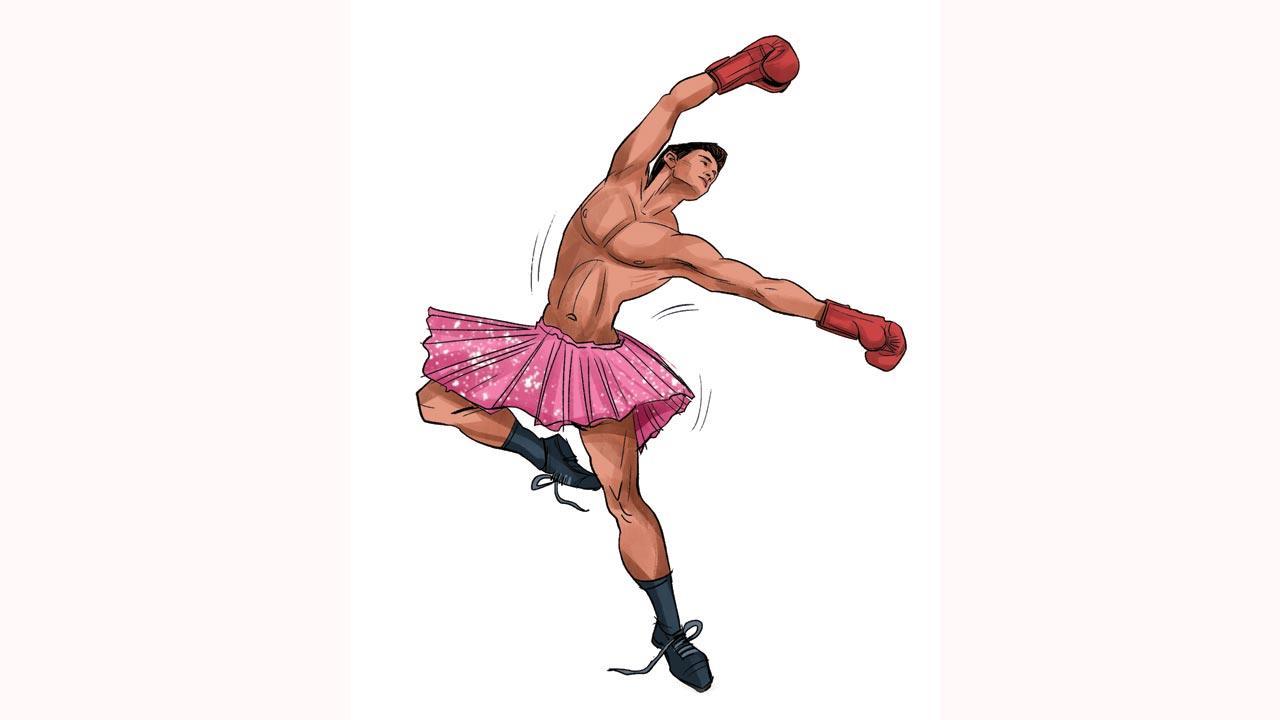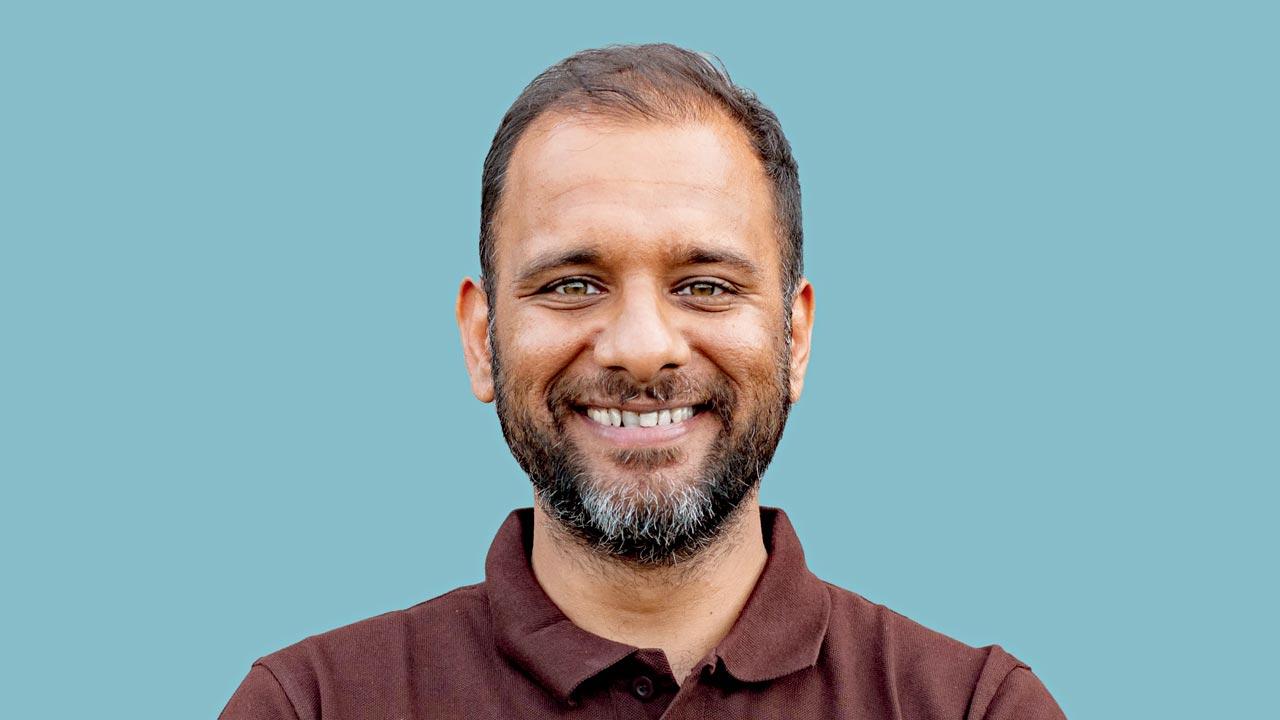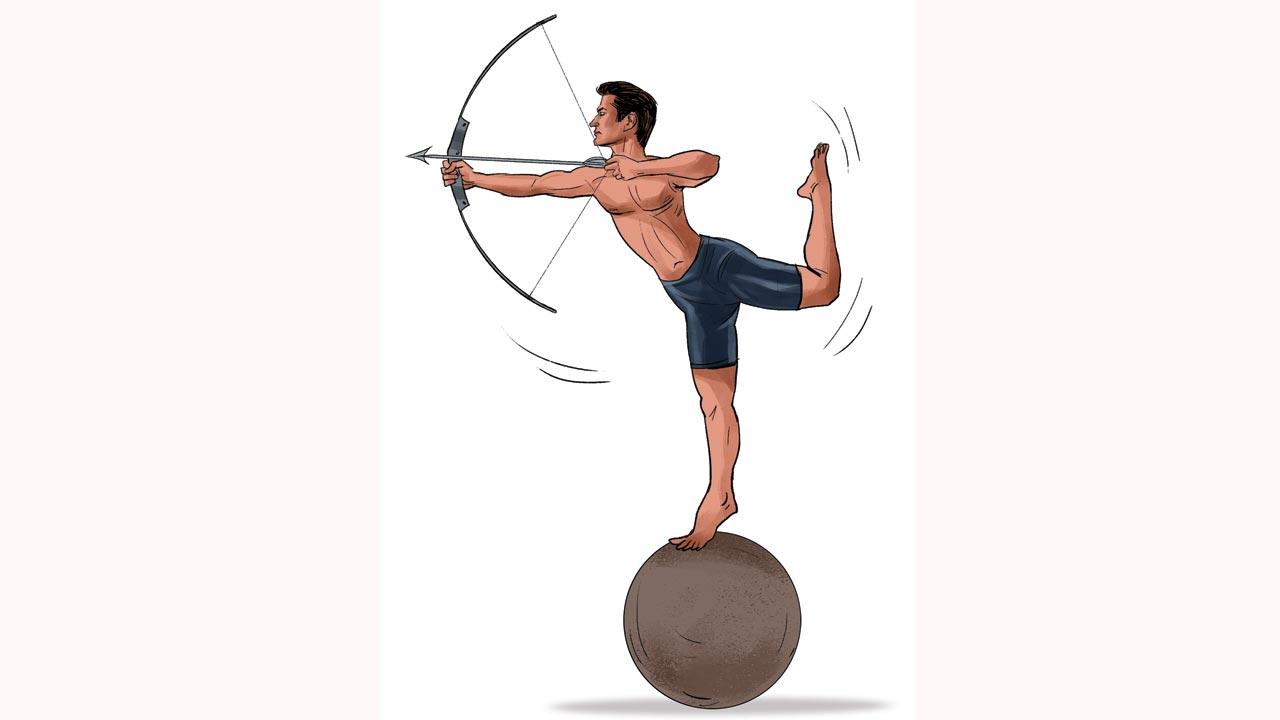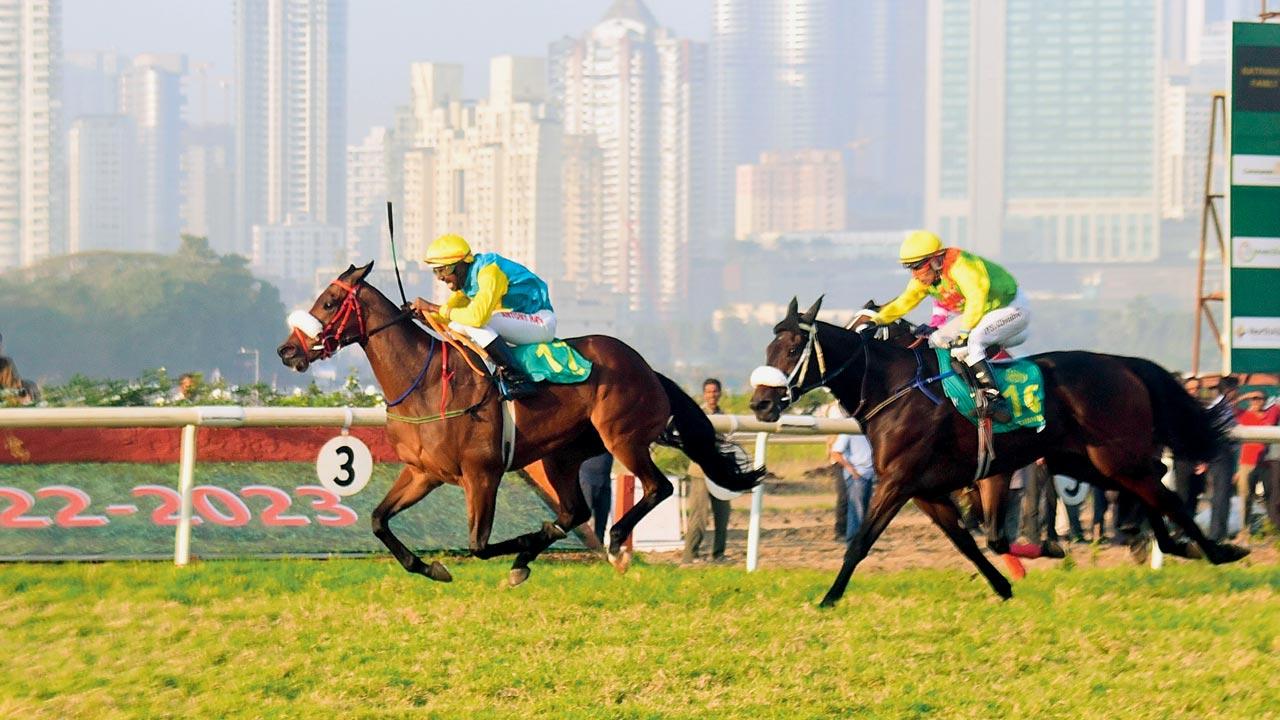Ahead of the upcoming 2024 Paris Olympics, we ask experts how top athletes train for peak performance and find surprising answers, like dance routines for boxers and practising the one-leg stance for archers

Illustrations/Uday Mohite
Watch any sports movie, and the build-up to the climax usually involves a montage of athletes drilling in their chosen discipline—Milkha Singh ran, the Phogat sisters wrestled, and Mary Kom boxed. But sports science has come a long way and gone are the days when a runner’s training involved just running, and a swimmer’s, swimming.
ADVERTISEMENT
With the 2024 Paris Olympics just around the corner, from July 26 to August 11, the country’s shooters, wrestlers, hockey players and other athletes are now neck deep in prep work. And, apart from the usual sprinting, jumping, lifting, and skipping, their training regimens look very different from what a layman might imagine. A study of exercise physiology has opened up new dimensions for coaches to get players competition-ready. It is precisely why shooters—who seemingly only employ their upper body—are hitting the gym to train their leg , or why boxers are…wait for it…dancing!
The Tokyo 2020 Summer Games marked India’s biggest haul in a single Olympics, with the team bagging seven medals, including a gold, two silvers and four bronzes. This year, all eyes are on the national contingent with the hope that they will further improve the tally. With such high hopes riding on the team, it’s not enough for athletes to stick to older training techniques.
Two experts in the industry—Aalaap Jawadekar, sports science lead at Olympic Gold Quest’s para programme, and Dr Umran Sayed, a Canada-based clinical exercise physiologist—let us in on the unconventional exercise routines that are frequently part of training programmes to give Olympic athletes an edge.
But before we share the dope, we encourage you to play coach for a day, and guess what exercise regimes might be assigned to each sportsperson. Make a mental note of the exercises you would include, and those that you believe would be irrelevant, and then compare it with the experts’ prescription to gauge how accurate your analysis is. Ready?
Boxing
Gym routine includes Speed work, dancing
Punches, says Jawadekar, need to be delivered with speed as well as power. “Technique is important in boxing, but endurance is crucial too. The idea is to tire the opponent as quickly as you can. An athlete needs to focus on how fast he or she can punch, and for how long. It is futile to box swiftly and tire the opponent out in 30 seconds if you cannot maintain that speed in the next two rounds. You must, after all, win three rounds to win the bout. Many boxers often get to the point where they are too tired to even lift an arm in subsequent bouts,” he explains.
Dr Sayed points out that since boxing is a weight-oriented sport, a practice called weight-cutting is also popularly adopted. “If I am a boxer whose height is six feet and five inches, and I manage to shave off so much weight before the weighing ceremony that I qualify to box in a category where my competitors are shorter than me, I will have a “reach advantage”. This is usually done by dehydrating the body right before the weighing ceremony to lose ‘water weight’. A boxer can subsequently rehydrate before the match, which takes place several hours after the weight is registered.”
Because boxers need to be on their toes during the game, Jawadekar says agility drills are routinely practised. “You’ll see them performing hill runs, and what we traditionally call start-and-stop exercises.”
Dr Sayed adds that several boxers also learn to dance to “enhance their footwork”. “Dancing not only improves footwork, but also helps the body develop a rhythm. Boxing is all about rhythm.”
While advances in sports science have enabled coaches to develop robust methods to get players ready for competition, Jawadekar says the “real magic” is in honing an athlete’s talent. “Training an elite athlete is also individualistic. The more a player has climbed up the ranks, the better he or she will understand how the sport has transformed their body. A good coach can see that, and create a plan that favours the athlete. It is an athlete’s variability, and the awareness of those strengths that can be used as an advantage, that eventually helps them shine. You also need to have the mindset of a champion. You can work with psychologists and mental conditioners, but, at the end of the day, you need to have the hunger [to win].”
Weight-lifters
Gym routine includes balancing and cardiovascular fitness
For a sport that’s supposedly all about physical strength and racking the barbell with as many plates as possible, lifting surprisingly involves a lot of balance work. “Lifting is a sport in which an athlete cannot afford to bend towards one side, because a player needs to pull the weight as fast as possible. Addressing imbalances is important because favouring one side more than the other will affect the mechanics of the lift and compromise its efficiency. Training to rectify imbalances is an important fitness component for lifters,” says Jawadekar.
“This is one sport in which a player simply cannot compete if they are injured. Your body has to be in the best condition to play because it’s an all-or-nothing sport; everything depends on the final lift. In a sport like badminton, if you have a niggle in the shoulder, you can get away with playing the match if you avoid a shot
that aggravates that pain. Such athletes can enjoy a long career because they can play despite their weaknesses. But, this is not possible in sports like sprinting and lifting, which are skill-based.
 Aalaap Jawadekar
Aalaap Jawadekar
You cannot be 90 per cent prepared. You can’t compete with a hamstring pull or a knee issue,” adds Jawadekar, going on to describe another fitness component that isn’t usually linked to lifting.
Cardiovascular training, he says, is crucial because, like archery, lifting isn’t about one lift alone. “While you watch the lifter only on the platform, there’s a lot of prep work that happens behind the scenes before they take their stance. A lifter doesn’t directly go on to lift the heaviest weight at get go. He or she begins by warming up, and lifting lighter weights in the weight room in a bid to prepare for the final lifts. All that prep work increases their heart rate. This means that an athlete should be fit enough to recover before the main sets.
For example, if an athlete is lifting 70 kg for a snatch in the weight room, which is 80 per cent of their maximum capacity, they should be able to bring their physiological parameters, like the heart rate and lactic acid [concentration], back to the baseline before attempting the next lift. If they tire themselves out too early, their final lift will be compromised. This recovery efficiency is brought about by cardiovascular training.”
Jawadekar says that after lifters train to enhance strength, they also focus on “training smaller muscles”. “Exercises to rectify imbalances are also executed. Imbalances are [less likely in lifters], however, if they have any, they can develop sufficient muscle memory to execute the lift without being hindered by them,” he says.
Shooters and archers
 Illustrations/Uday Mohite
Illustrations/Uday Mohite
Gym routine includes lifting, balancing, lower-body strength
Generally considered static sports, shooting and archery, says Jawadekar, are “all about endurance fitness”. Given that archers are meant to execute 70 shots
in a game, they are expected to compete for 75 minutes. “Archery is not about just one shot. An athlete’s muscles need to be prepared to work for long durations, so both strength and endurance training are essential. During the off-season, you will find them performing basic lifts that target large muscle groups. They need not lift heavy weights, but must execute multiple repetitions of exercises with light to moderate weights, in order to mimic how they function in the sport.”
While a layman might assume that both these sports only utilise the muscles of the upper body, lower-body strength, says Jawadekar, is paramount for these athletes. “It is this strength that helps them hold their stance. [Stability] is a very important element in both these sports because the accuracy of the shot depends on it. The muscles of the legs and the core are thus trained to improve a player’s stability. Athletes do not like to change their position once they acquire a stance because doing so can hinder their performance. Maintaining the same position requires work. The lower body is the fulcrum on which your upper body is dependent. The more efficient the muscles of the hips, legs and spine are, the more efficiently they will be able to recruit the upper-body muscles,” he says.
Dr Sayed refers to a player’s instability as “tremors”. “Archery demands specific strength and endurance, because it involves performing the same movement, repeatedly. The heart rate can change across [actions like] drawing and shooting [the bow]. If the cardiac cycle is not regulated, the body can have tremors, which can severely affect the efficiency of the shot. Archers even lower their heart rate using pursed-lipped breathing methods for the same reason.”
To enable athletes to enhance precision training, Jawadekar says several coaches “train shooters with foam pads under their feet to pose a challenge”. Balancing drills are part of the regimen, and exercises that recruit the small muscles of the upper body and the stabilisers of the core are also included in the plan. Interestingly, all of this is done to also target the cardiovascular system. “During the game, the interval between shots could be short. For instance, an archer needs to shoot a certain number of shots within a stipulated time. He or she may need to walk 70 metres, to and fro, to grab the bow and shoot again. To shoot the next shot accurately, a player must be able to lower the heart rate quickly. This is referred to as recovery, and it is a player’s training that determines how well they recover. At the gym, they will perform exercises with short bouts of recovery. It is along the lines of a circuit training routine, where the cardiovascular and muscular systems are targeted at once. For example, you’ll find yourself doing a 30-second bout of mountain climbers, and immediately balancing on one leg. Such patterns keep your heart racing for 30 minutes, thereby compelling you to recover quickly.”
Equestrian sports
 Jockeys might look like they are just sitting on a saddle during the entire race, but their core and muscle strength affects both their posture and the horse’s performance. Representation pic
Jockeys might look like they are just sitting on a saddle during the entire race, but their core and muscle strength affects both their posture and the horse’s performance. Representation pic
Gym routine includes strength training, lower body strength
What’s a jockey, seated on a saddle atop a horse for the entire duration of the race, got to do with lifting weights? A lot, says Dr Sayed. “A [jockey] does not merely sit on a saddle. During the race, they lean forward to help the horse race faster, thereby putting an immense load on the muscles of their legs, back, core, and arms. This is why strength training is crucial for riders.”
Also, while compound movements—which target multiple muscles at once—are important, riders need to train muscles in an isolated manner too. “In any activity, if the muscles at the back of my leg are stronger than those in the front, I can let them take the load and perform the activity anyway. But, this is not possible in riding. If a rider’s hamstrings are weak, they cannot let the quads take the load, because this may cause a postural change. Any change in the rider’s posture can significantly affect the performance of the horse. So, muscles must be trained in an isolated fashion to ensure that each one is as strong as the other.”
 Dr Umran Sayed
Dr Umran Sayed
Apart from isolated muscular training and compound training, exercises are designed to help the body hold the position for long durations without adding stress to the ligaments. Given that riders often encounter lower back issues due to the sport, mobility and strengthening drills for the muscles of the posterior chain are executed.
A jockey, he says, needs to prioritise his training as much as he does that of the horse. “If the horse is good, but the athlete isn’t, you cannot race. Balance exercises with the horse are also practised.”
7
No. of medals India won at the 2020 Tokyo Olympics
 Subscribe today by clicking the link and stay updated with the latest news!" Click here!
Subscribe today by clicking the link and stay updated with the latest news!" Click here!












